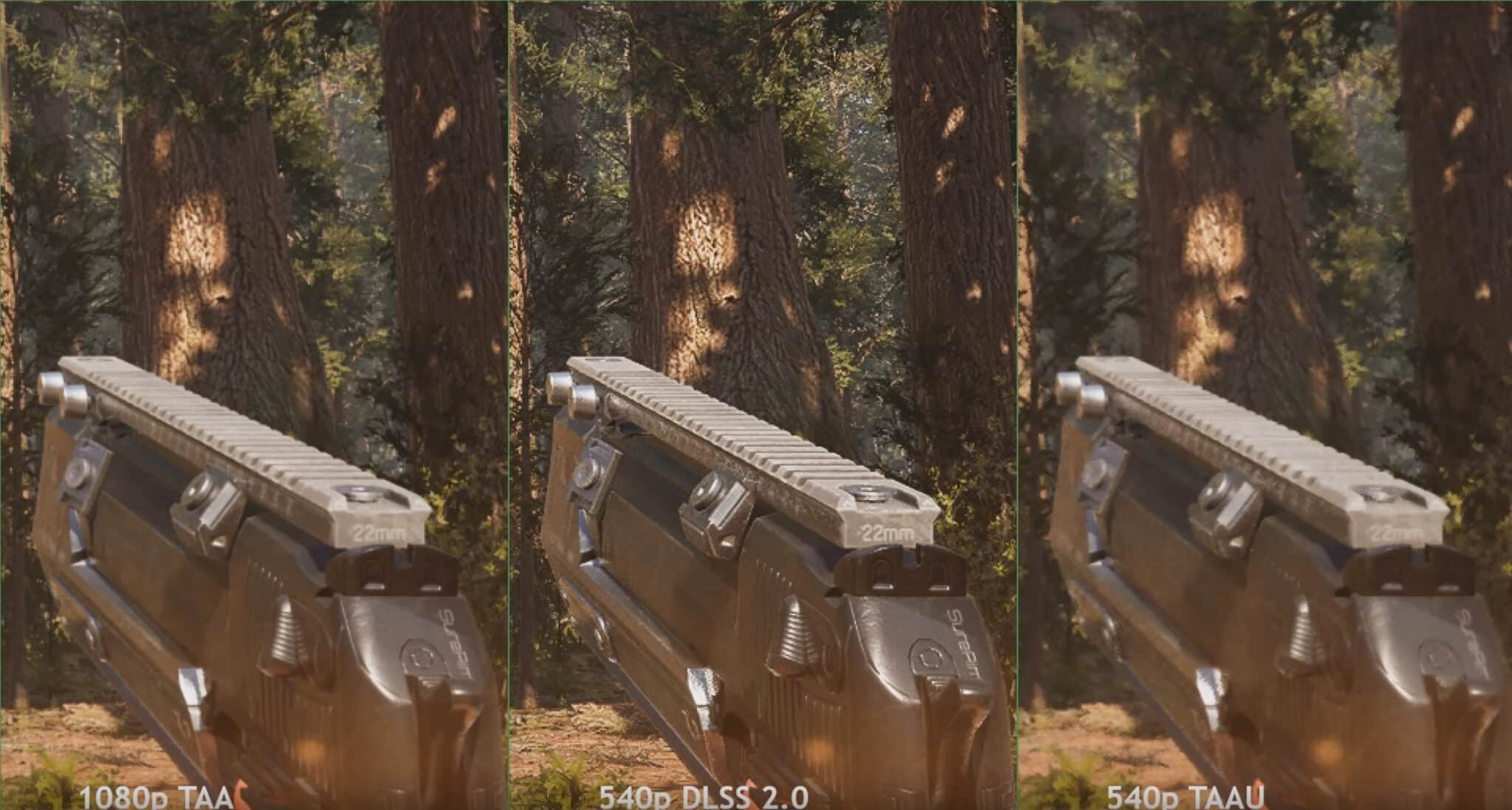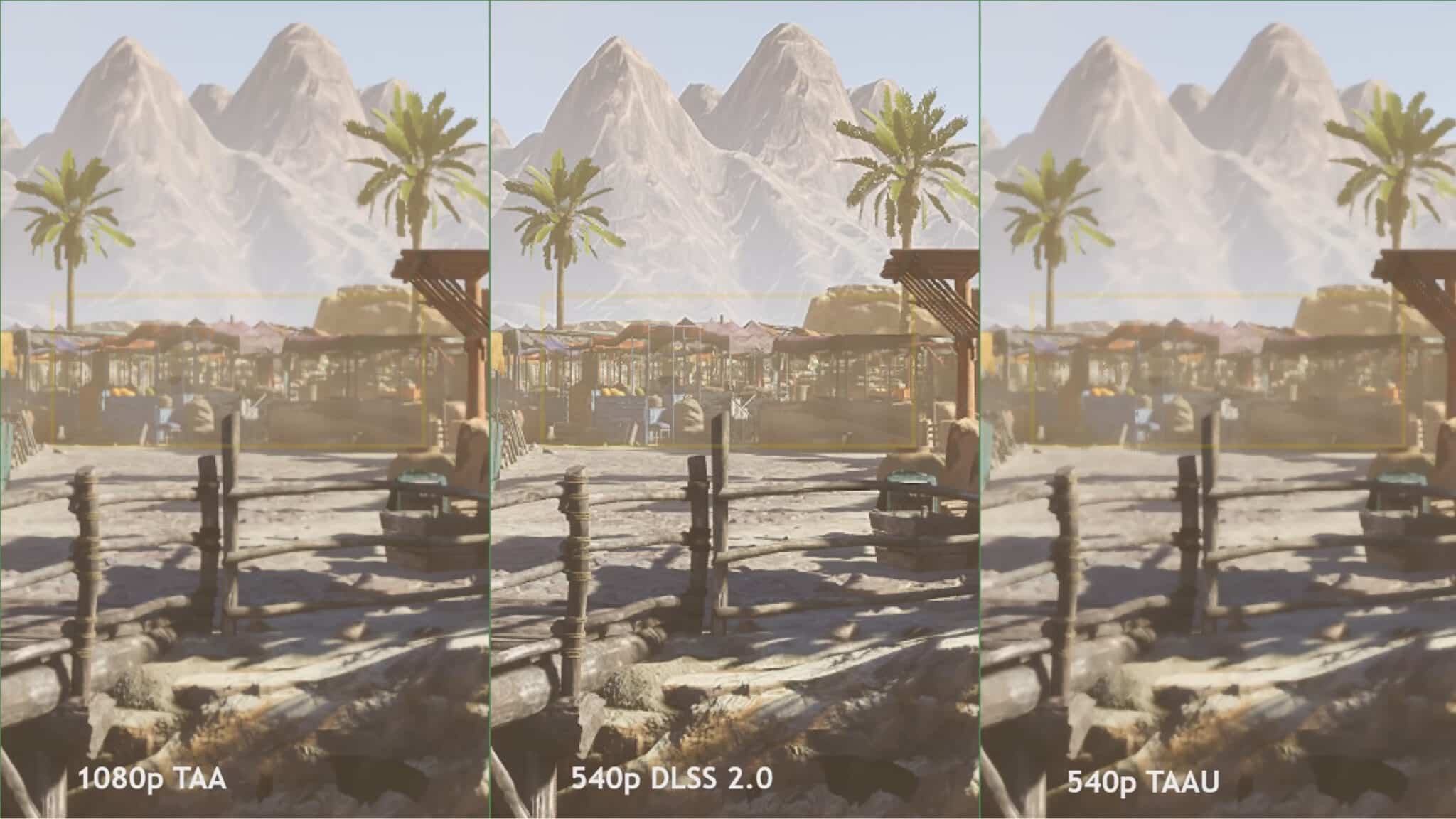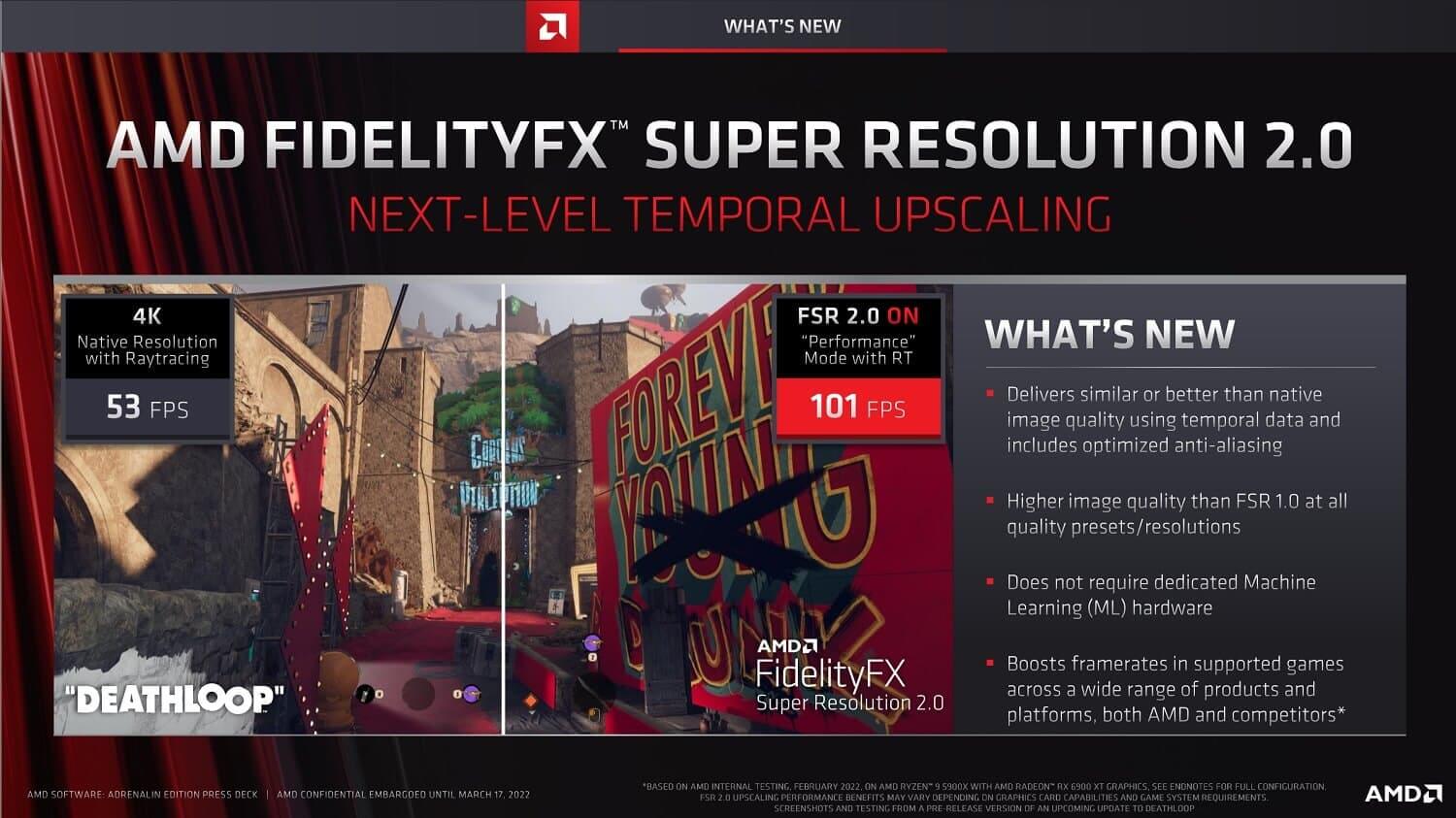AMD today showed off the second iteration of its FidelityFX Super Resolution technology along with the Radeon Software 2022 Update. FSR 2.0, much like its predecessor, won’t leverage any dedicated machine learning hardware like NVIDIA’s DLSS (Tensor cores) or Intel’s XeSS (XMX). Instead, it’ll stick to the tried and tested temporal upscaling solution. As predicted a while back, FSR 2.0 will be more or less identical to Temporal Super Resolution (TSR) used by Epic in Unreal Engine 5.
As we’re seen in the past, temporal upscaling (when used properly) can be very effective in reducing aliasing as well as scaling up an image to higher resolutions. FSR 2.0 promises to offer similar to or better than native visual quality by utilizing data from previous frames (temporally) while also anti-aliasing it.
The best part? FSR 2.0, just like FSR 1.0, will run on pretty much any GPU: NVIDIA’s RTX 20 and 30 series as well as Intel’s upcoming Arc Alchemist graphics cards. Since no neural network accelerator is required, it’ll work on even integrated graphics processors, giving AMD’s Ryzen 6000 processors another massive advantage against Intel’s Alder Lake-P parts.

It’s worth noting that NVIDIA’s DLSS 2.x algorithm also integrates a temporal upscaler. The initial version of the upscaling technology was rather lackluster, often losing detail and resulting in hallucinations. You can read more about that below:


- NVIDIA DLSS 2.0: Improved Quality and Temporal Vectors
- Intel’s XeSS Upscaling Tech Works (and Looks) Just Like NVIDIA DLSS 2.0
You can learn more about FSR 2.0 during AMD’s GDC talk on the 23rd of March. It’ll start rolling out in the latest games in the second quarter of 2022.

 NVIDIA RTX 5080 Allegedly Launching Ahead of the RTX 5090 in H2 2024
NVIDIA RTX 5080 Allegedly Launching Ahead of the RTX 5090 in H2 2024 NVIDIA RTX 5090, 5080 & 5070/Ti Mobile to Feature 16GB VRAM via a 256-bit Bus
NVIDIA RTX 5090, 5080 & 5070/Ti Mobile to Feature 16GB VRAM via a 256-bit Bus NVIDIA RTX 5080 Mobile Allegedly Based on GB203 GPU, GDDR7 Memory & PCIe Gen 5
NVIDIA RTX 5080 Mobile Allegedly Based on GB203 GPU, GDDR7 Memory & PCIe Gen 5 AMD Radeon RX 7900 XT Drops Below $700 (-$210 Off), RX 6800 at $369 (-$310 Off)
AMD Radeon RX 7900 XT Drops Below $700 (-$210 Off), RX 6800 at $369 (-$310 Off)